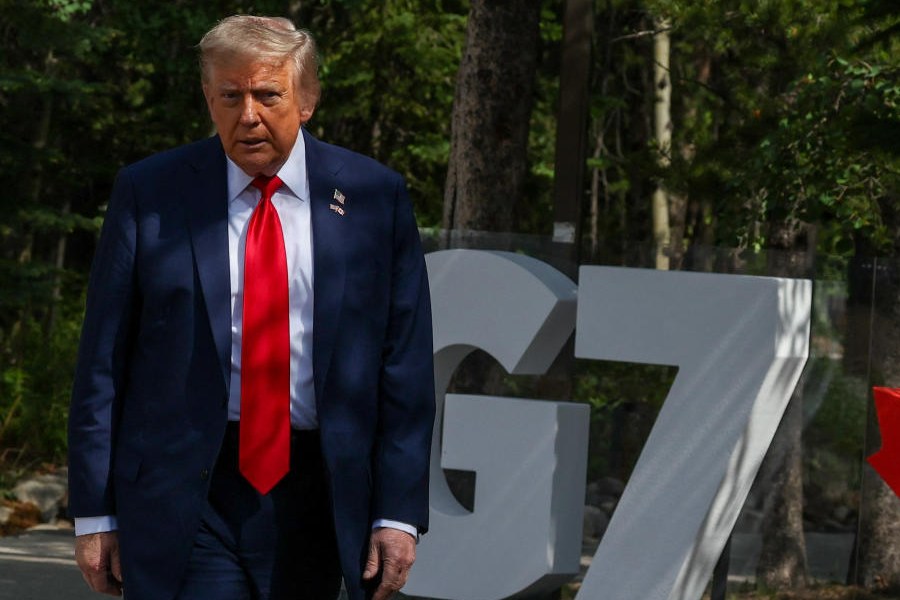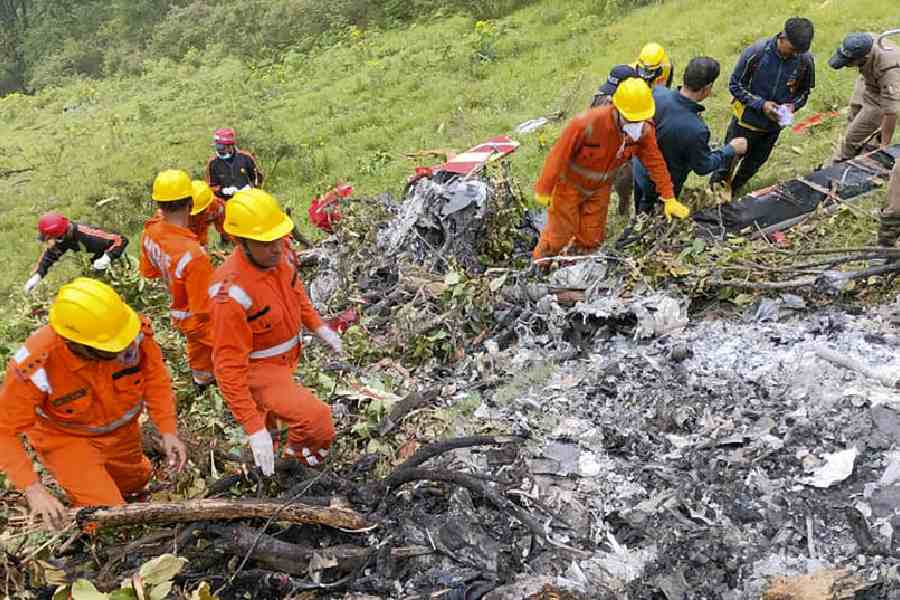 |
| Pallabi Das shows a gamosa bearing the vulture motif. Telegraph picture |
Borjhar, June 16: White cotton gamosas with traditional red embroidery will now sport vulture motifs to spread awareness on conservation of the endangered bird in Assam.
The Bombay Natural History Society, an NGO which jointly runs the Vulture Conservation Breeding Centre at Rani in Kamrup district of Assam with the state government, has decided to involve weavers to spread the message.
The rise in vulture deaths in the state has prompted the NGO to take up the initiative.
According to sources in the NGO, since 2007 around 300 vultures of three species — slender-billed vulture, white-backed vulture and the Himalayan griffon — have died in Assam because of poisoning, train hits and electrocution. Scores of birds die after feeding on carcasses of animals that have been administered diclofenac, an anti-inflammatory drug used as a painkiller. The non-steroidal drug, introduced in India in 1993, was banned in 2006. However, diclofenac for patients, available in pharmacies, is used by farmers for treating cattle.
A 19-year-old weaver has already woven a number of gamosas to spread the save-vulture message. Pallabi Das of Bikrampur in south Kamrup started the work by weaving motifs of a pair of vultures on a metre-long gamosa.
“I was approached by the breeding centre and asked whether I could weave vultures on gamosas. I said ‘yes’ though I have seen the bird mostly in magazines and books. I drew a pair of birds first on art paper and thereafter on graph paper before weaving the motifs on my loom,” Das said.
“The work of the weaver is incomparable because the motifs of the endangered bird on a gamosa, which is synonymous with respect and honour, will help spread the message better among the masses,” Sachin Ranade, in-charge of the Vulture Conservation Breeding Centre, told this correspondent.
Ranade said: “When a vulture feeds on diclofenac-administered carcass, its kidneys fail to function following which uric acid gets deposited in the viscera. This eventually leads to the bird’s death.”
The organisation has set up vulture-safe zones across 30,000 square km area in nine of Assam’s districts and has completed a three-phase survey on whether diclofenac for human consumption is still used by farmers to treat animals. The districts selected are Nagaon, Sonitpur, Golaghat, Dhemaji, North Lakhimpur, Sivasagar, Karbi Anglong, Jorhat and Dibrugarh.
The survey conducted in 2013-2014 found a good number of farmers are still using the drug to treat animals. “In the absence of veterinary diclofenac in pharmacies, 16 per cent use of diclofenac for patients in all the nine districts,” he said. The Drug Controller General of India, through a letter dated September 26, 2007, had ordered drug manufacturers to mark the drug with a “Not for veterinary use” label.
Sources said that the centre takes utmost care that a captive-bred vulture is fed meat that does not contain any diclofenac. There are seven chicks currently being raised at the breeding centre.
The centre has also conducted awareness meetings with citizens, including students, veterinary doctors and forest officials on the harmful effects of the drug on the bird.










